[Func-Num] 8.6 Exponential and Logarithmic Functions, Applications, and Models
Categories: Func-Num
Tags: Logarithmic Exponential
📋 This is my note-taking from what I learned in the class “Math175-002 Functions & Number Systems”
Exponential and Logarithmic Functions, Applications, and Models
- Exponential Functions and Applications
- Logarithmic Functions and Applications
- Exponential-Logarithmic Applications
1. Exponential Functions and Applications
An exponential function with base b, where b > 0 and b != 1, is a function of the form f(x) = bx, where x is any real number.
Example: Graph of Exponential Function (b > 1)
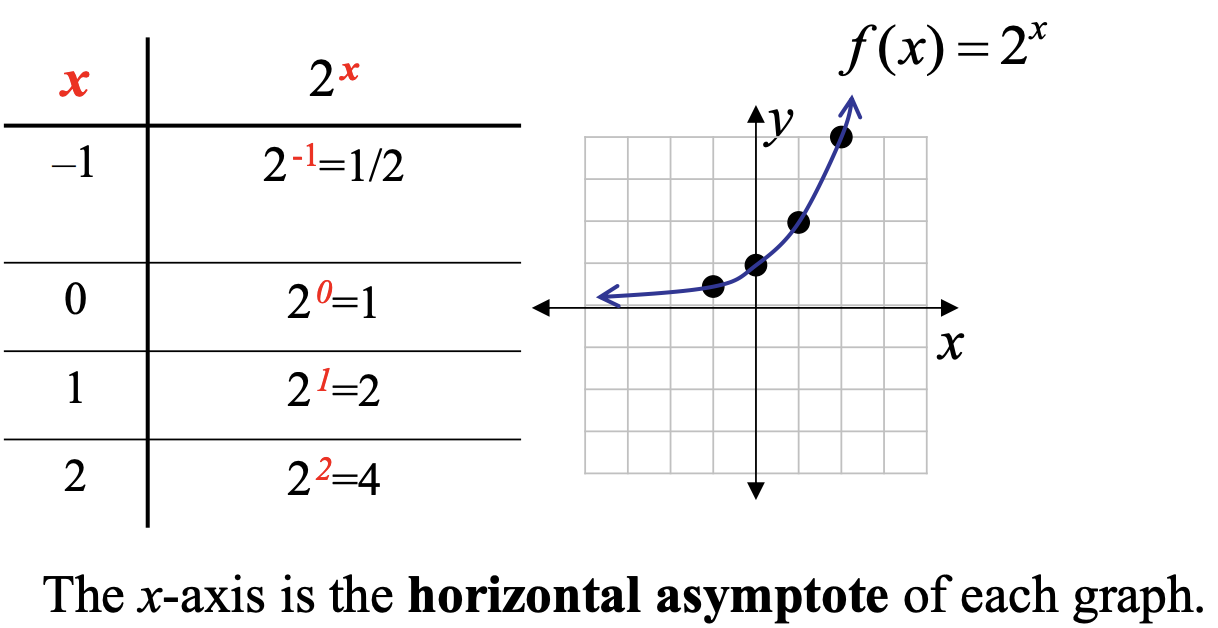
Example: Graph of Exponential Function (0 < b < 1)
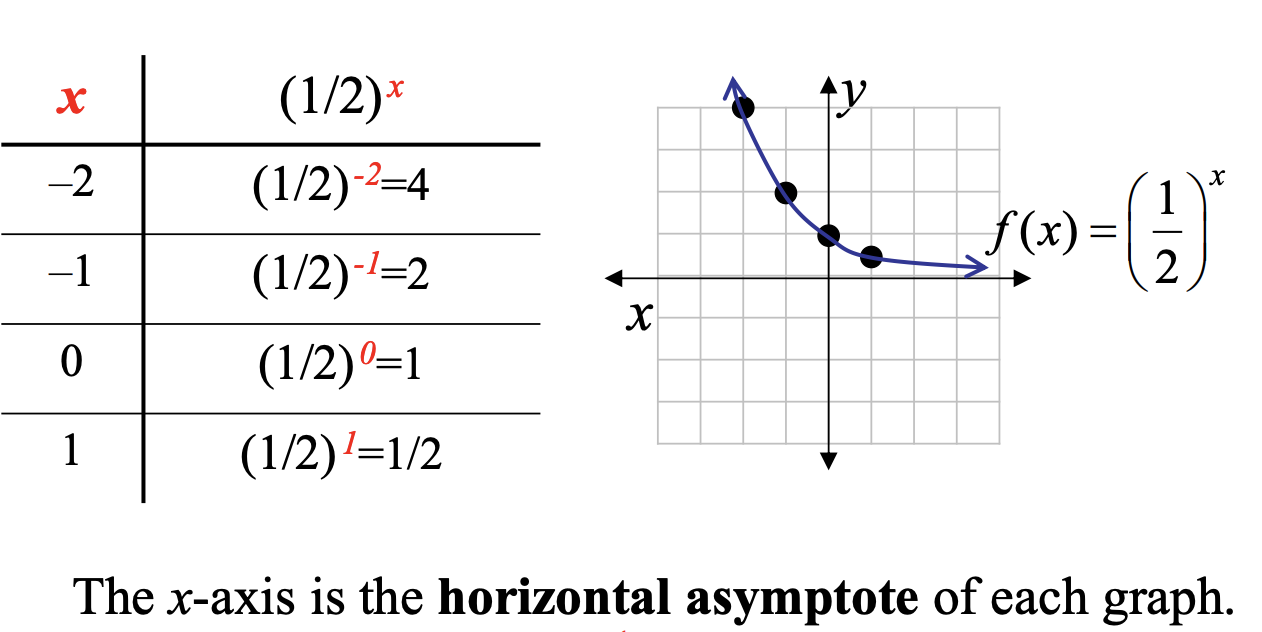
1 - A. Graph of f(x) = bx
- The graph always will contain the point (0, 1).
- When b > 1, the graph will rise from left to right. When 0 < b < 1, the graph will fall from left to right.
- The x-axis is the horizontal asymptote.
- The domain is (-∞, ∞) and the range is (0, ∞).
1 - B. Exponential with Base e
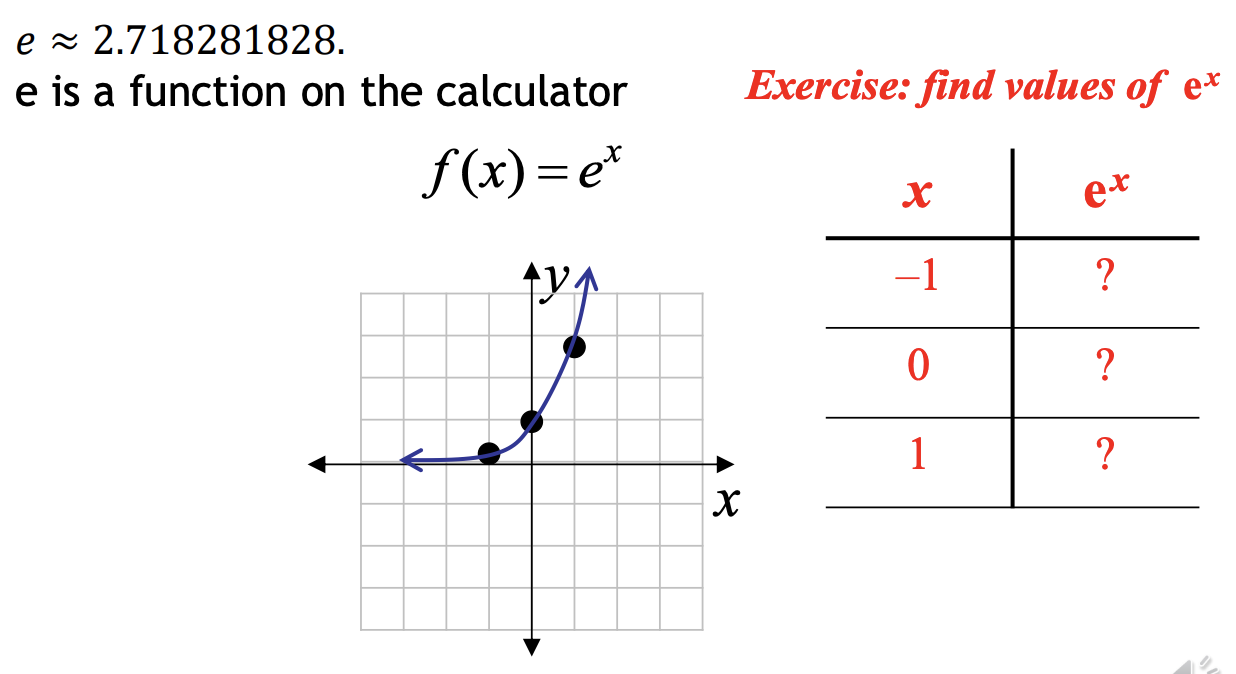
1 - C. Compound Interest Formula
Suppose that a principal of P dollars is invested at an annual interest rate r (in percent, expressed as a decimal), compounded n times per year. Then the amount A accumulated after t years is given by the formula
A = P(1 + \({r} \over {n}\) )nt
Example: Compound Interest Formula
Suppose that $2000 dollars is invested at an annual rate of 8%, compounded quarterly. Find the total amount in the account after 6 years if no withdrawals are made.
| Solution |
|---|
| A = P(1 + \({r} \over {n}\))nt |
| A = 2000(1 + \({0.08} \over {4}\))4(6) |
| A = 2000(1.02)24 ≈ 2000(1.60844) = 3216.88 |
There would be $3216.88 in the account at the end of six years.
1 - D. Continuous Compound Interest Formula
Suppose that a principal of P dollars is invested at an annual interest rate r (in percent, expressed as a decimal), compounded continuously. Then the amount A accumulated after t years is given by the formula
A = Pert.
Example: Continuous Compound Interest Formula
Suppose that $2000 dollars is invested at an annual rate of 8%, compounded continuously. Find the total amount in the account after 6 years if no withdrawals are made.
| Solution |
|---|
| A = Pert |
| A = 2000e0.08(6) |
| A = 2000e0.48 ≈ 2000(1.61607) = 3232.14 |
There would be $3232.14 in the account at the end of six years.
1 - E. Doubling Time Formula
Time needed to double an initial amount as an exponential function: A = Pert
- A: is present amount
- P: is future amount after t years
- r: is annual compounding rate
Example: Doubling Time
Suppose that a certain amount P is invested at an annual rate of 5% compounded continuously. How long will it take for the amount to double (doubling time)?
| Solution | |
|---|---|
| A = Pert | Formula |
| 2P = Pe0.05t | Sub in 2P for A (double) |
| 2 = e0.05t | Divide by P |
| ln2 = ln e0.05t | Take ln of both sides |
| ln2 = 0.05t | Simplify |
| t = \({ln 2} \over {0.05}\) ≈ 13.9 | Divide by 0.05 |
Therefore, it would take about 13.9 years for the initial investment P to double.
2. Logarithmic Functions and Applications
A logarithmic function with base b, where b > 0 and b ≠ 1, is a function of the form
g(x) = logbx, where x > 0.
2 - A. Graph of g(x) = logbx
The graph of y = logbx can be found by interchanging the roles of x and y in the function as shown x = by (Exponential Function)
Example: Logarithmic Functions
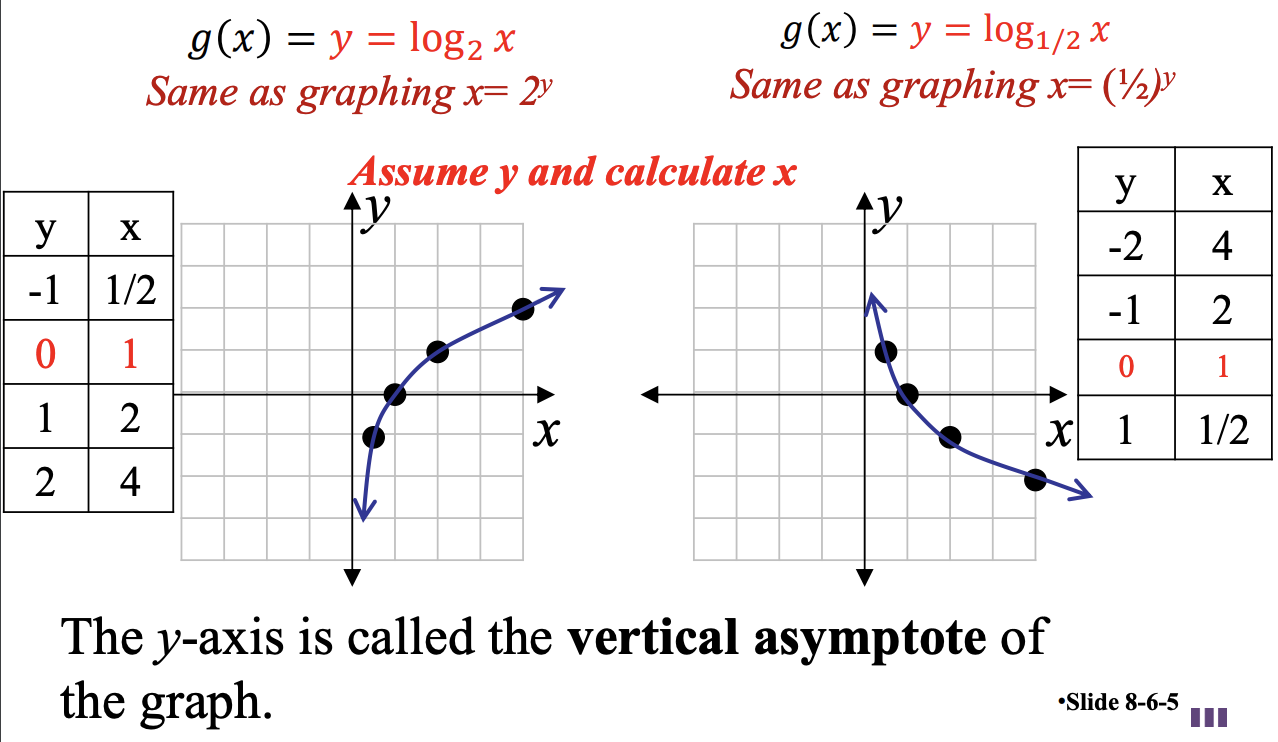
2 - B. Characteristics of Graph g(x) = logbx
- The graph always will contain the point (1, 0).
- When b > 1 the graph will rise from left to right. When 0 < b < 1, the graph will fall from left to right.
- The y-axis is the vertical asymptote.
- The domain is (0, ∞) and the range is (-∞, ∞).
2 - C. Natural Logarithmic Function (y = ln x)
“g(x) = y = ln x” is called the natural logarithmic function.
ln x = logex, where base e = 2.71828…
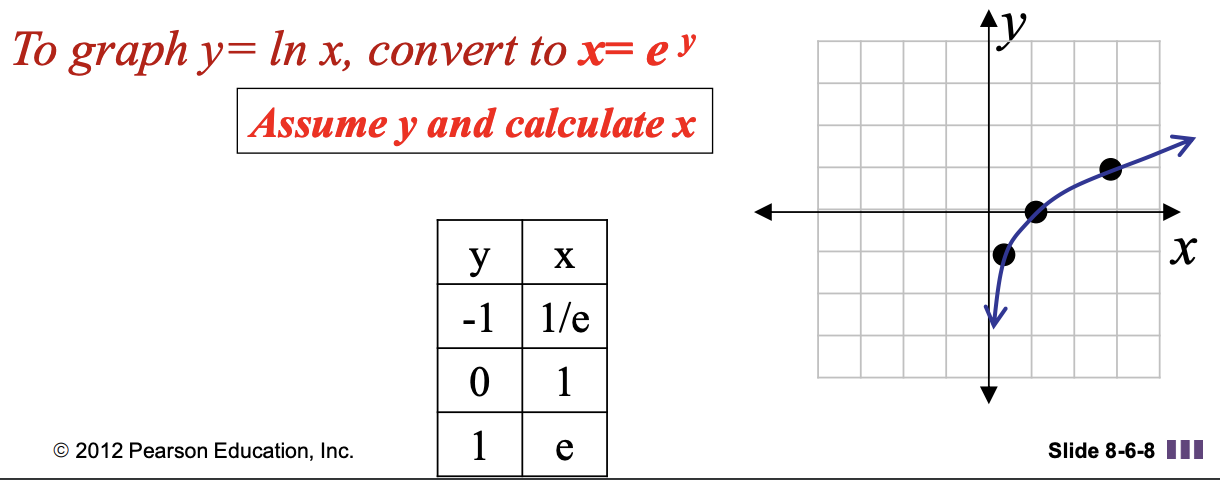
The expression ln ek is the exponent to which the base e must be raised in order to obtain ek. There is only one such number that will do this, and it is k. Thus for all real numbers k, ln ek = k. (e = 2.71828…)
2 - D. Models in Nature
Radioactive materials disintegrate according to exponential decay functions. The half-life of a quantity that decays exponentially is the amount of time it takes for any initial amount to decay to half its initial value.
Example : Half-Life
Carbon 14 is a radioactive form of carbon that is found in all living plants and animals. After a plant or animal dies, the radiocarbon disintegrates. The amount of carbon 14 present after t years is modeled by the exponential equation y = y0e-0.0001216t
a) What is the half-life of carbon 14?
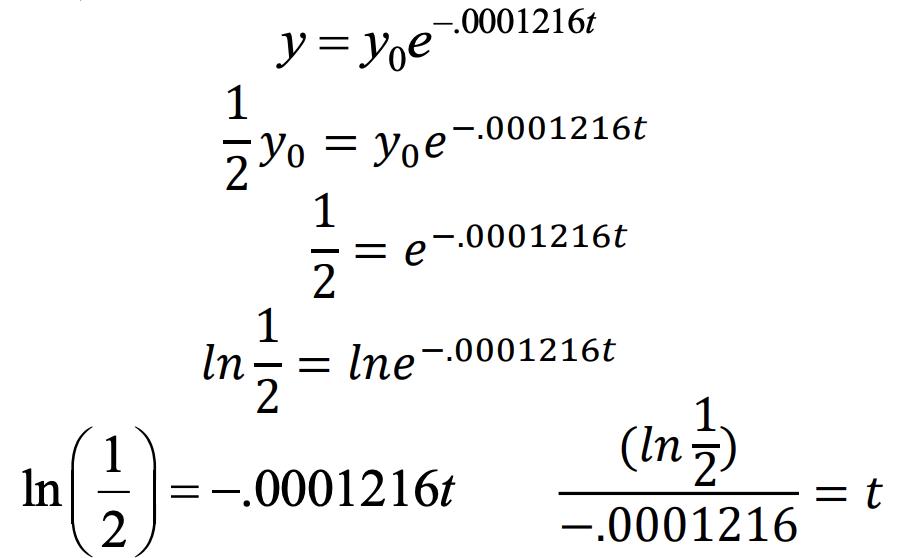
t ≈ 5700 → The half-life of carbon 14 is about 5700 years.
b) If an initial sample contains 1 gram of carbon 14, how much will be left in 10,000 years?
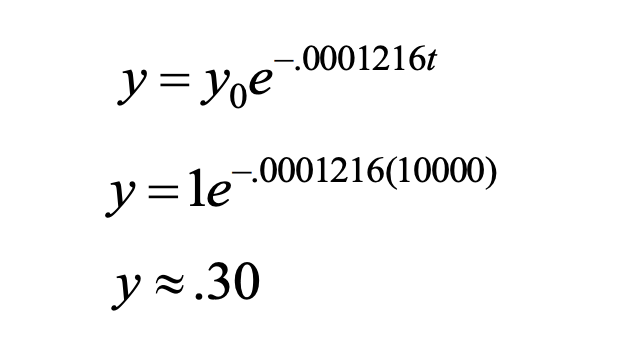
There will be about 0.30 grams remaining.
3. Exponential-Logarithmic Applications (Exponential and Logarithmic Equivalents)
For b > 0 and b ≠ 1, by = x, then y = logbx
| Exponential Equation | Logarithmic Equation |
|---|---|
| 34 = 81 | 4 = log381 |
| 104 = 10,000 | 4 = log1010,000 |
| 4-3 = \({1} \over {64}\) | -3 = log4\({1} \over {64}\) |
| 30 = 1 | 0 = log31 |

Leave a comment